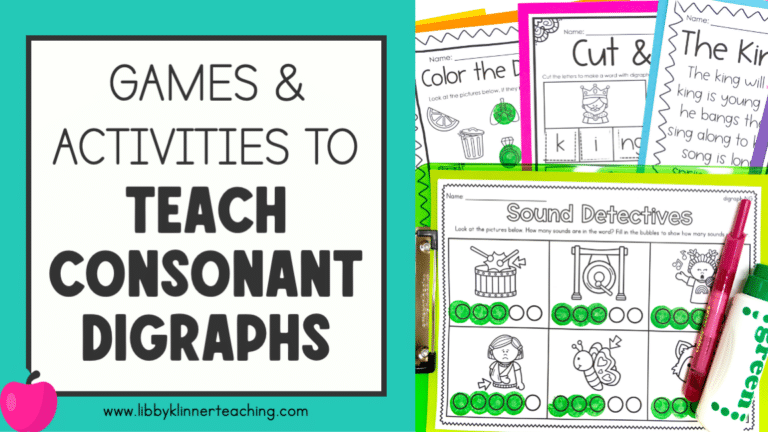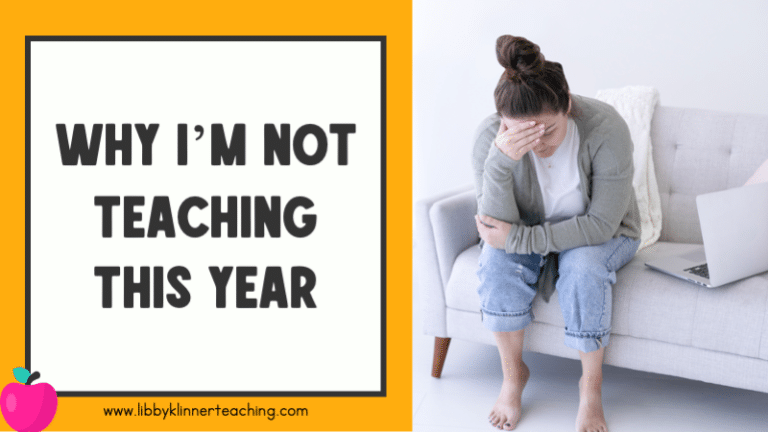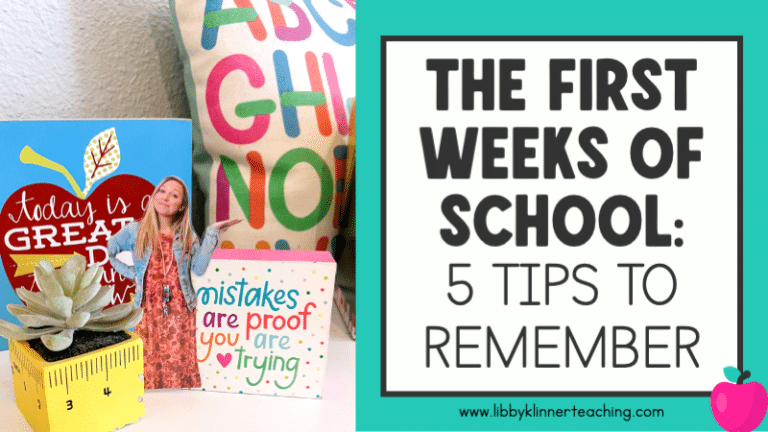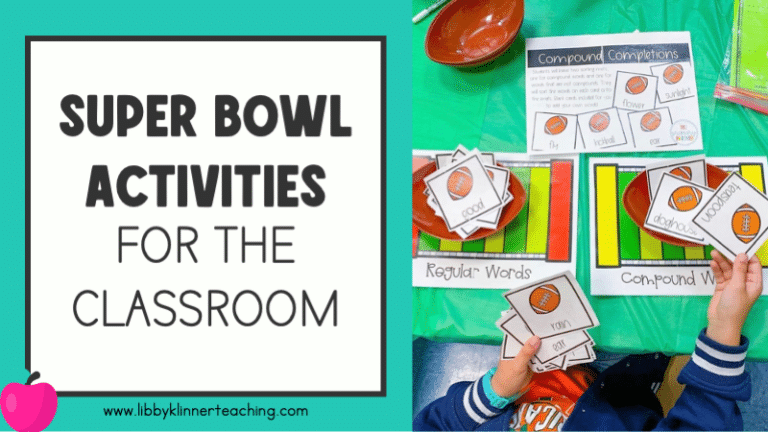What is Phonics? A Guide for Parents

Are you a parent supplementing your child’s in-person or virtual learning with your own teaching? Are you confused about what your kindergarten, first grade, or second grade child should be learning to read? Do you feel unprepared to support their reading progress? Are you asking, ‘what is phonics and how can I help my child?’
Parents are under a lot of stress to facilitate their child’s learning at home. It’s overwhelming to try and teach your child to read and feel like you don’t know what you’re doing. I’m here to break down what phonics is and tell you about some of the stepping stones in phonics instruction!

What is phonics?
Phonics is the understanding of the relationship between sounds (called phonemes) of spoken language and letters of written language. For example, you know that b makes the /b/ sound and c makes the /k/ sound. You can relate the letters to the sounds they make.
To understand how to teach phonics, you need to have an understanding of phonemic awareness and how it relates to phonics. Phonemic awareness is the ability to identify and manipulate individual sounds, or phonemes, in spoken words. For example, the word bat has three phonemes: /b/ /a/ /t/. The word ship has three phonemes, although it is made up of four letters: /sh/ /i/ /p/. Students that demonstrate phonemic awareness can manipulate sounds they hear in spoken words. Phonemic awareness tasks are oral, phonics tasks are both oral and visual.
Scholastic says “Despite these different focuses, phonics instruction and phonemic awareness instruction are connected. In fact, phonemic awareness is necessary for phonics instruction to be effective,” so its important to begin phonemic awareness instruction early.
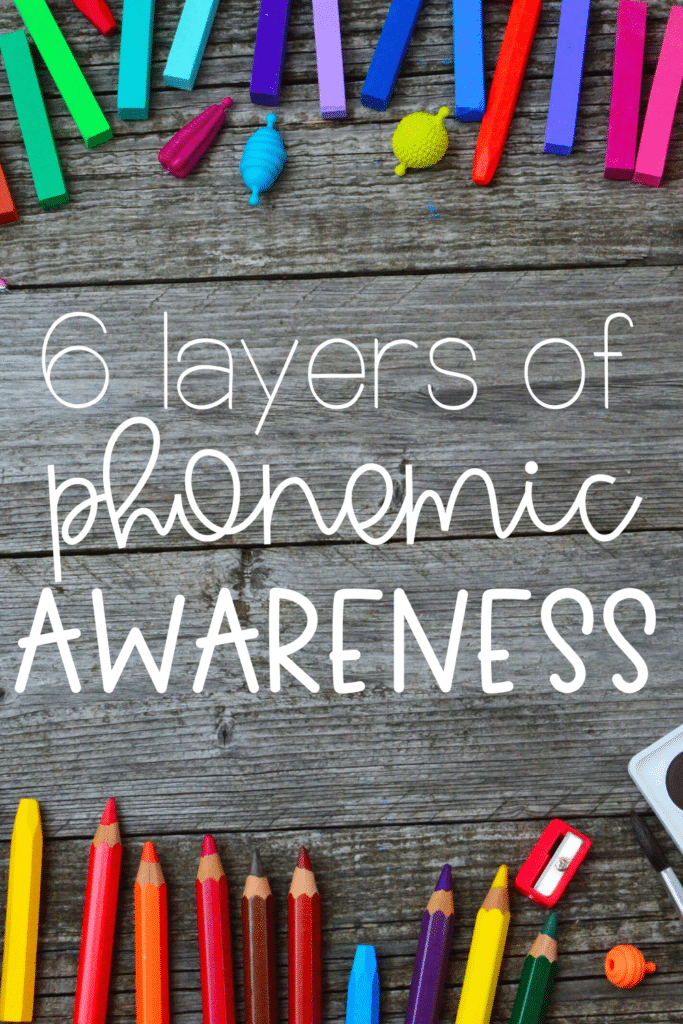
The 6 layers of phonemic awareness
To improve your child’s reading, you should focus on the six layers of phonemic awareness. These layers are ways in which your child can identify and/or manipulate phonemes. To understand what phonics is and how to teach it, these phonemic awareness activities are very important!
1. Phonemic isolation
Phonemic isolation is the ability to isolate a phoneme within a word or syllable. Ask your child, ‘what is the first sound you hear in the word lap?’ and your child identifies /l/ as the first sound in the word. It’s important to do this with medial and ending sounds as well. This should be introduced orally before using these cards as a visual.

It’s important that this is done orally. So your child looks at the picture of the sun, says the word out loud, and identifies the beginning (b) sound as /s/. You can do this while you’re in the car, cooking dinner, or reading a book. Say a word, and ask your child to isolate one sound in the word. See example below for medial and ending sounds.
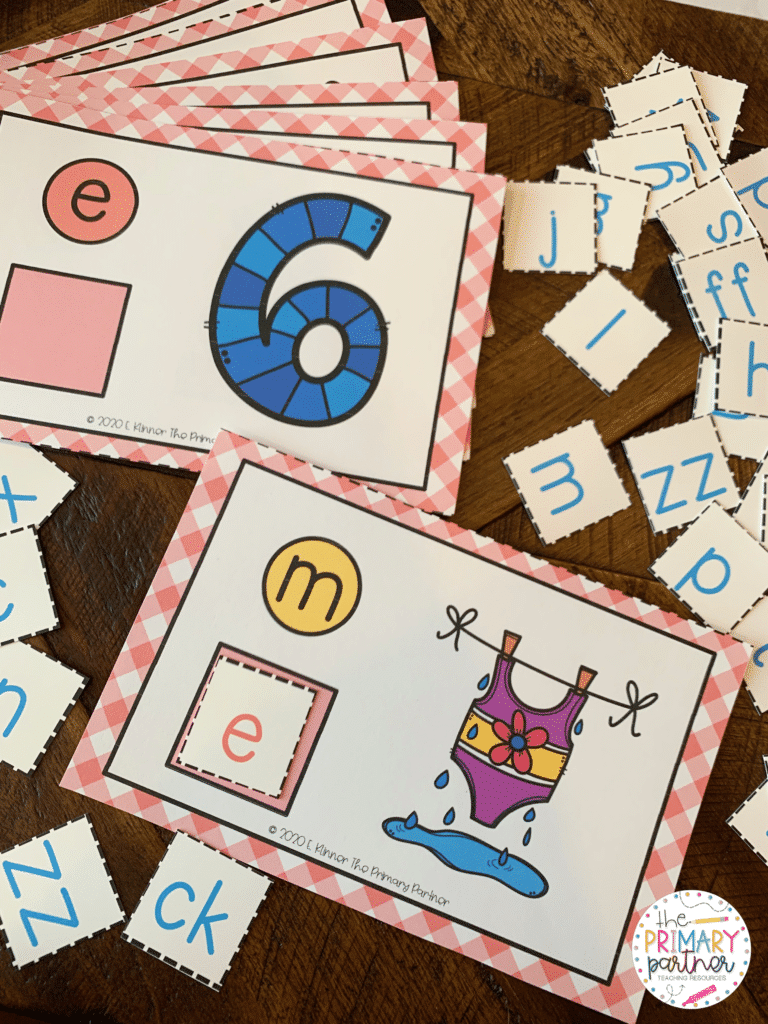
2. Phoneme blending
Blending phonemes means identifying sounds and blending them together to make a word. Ask ‘what word is /b/ /a/ /g/?’ saying the sounds only, not the word. You want your child to blend the sounds together to make ‘bag.’
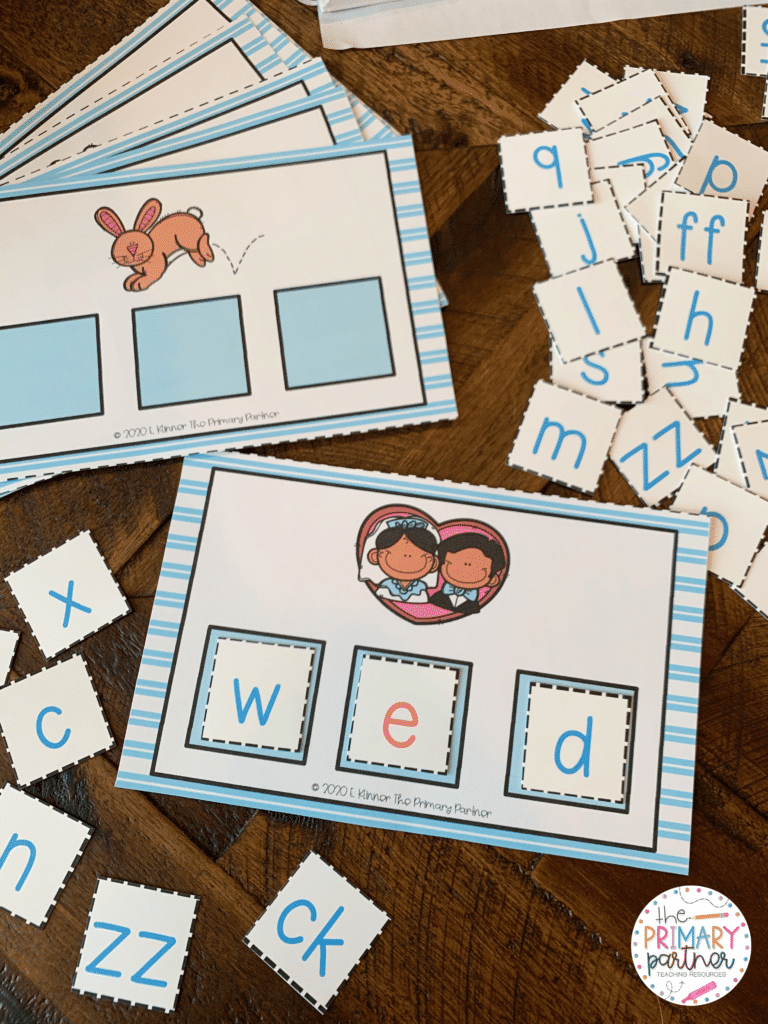
Show them a picture and ask them to identify it or give them a word broken apart into sounds. They will blend the sounds together to make the word. /W/ /e/ /d/ makes ‘wed!’

Using these cards, you could either ask them to identify the picture, or you could give them the sounds. They must blend the sounds together to make the word. Asking them to find the corresponding letters, makes it a phonics activity!
3. Phoneme segmenting
Phoneme segmenting is the opposite of blending! Your child will break apart the sounds in a word. If they are given the word ‘dock,’ they can identify the three phonemes as /d/ /o/ /k/.
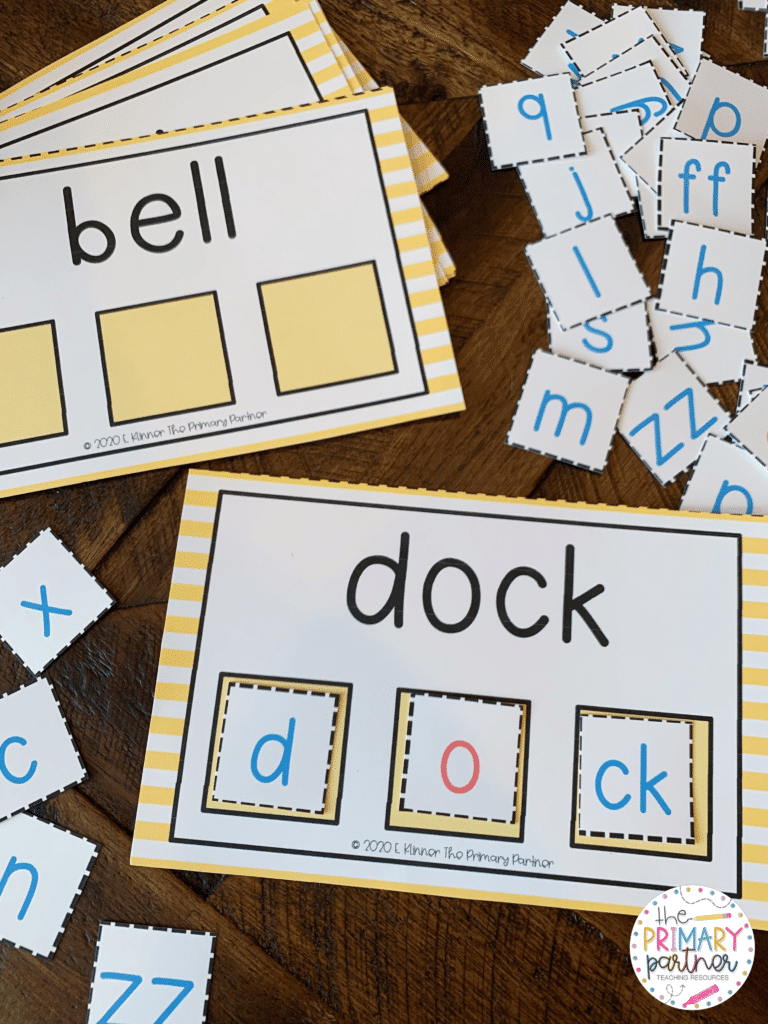
Say a simple word to your child, such as cat, bug, or bed, and ask them to break the word into sounds. Words that have a -ck ending or a double final consonant, like boss or tell, are great to use in a phoneme segmenting activity when your child is learning to spell these words.
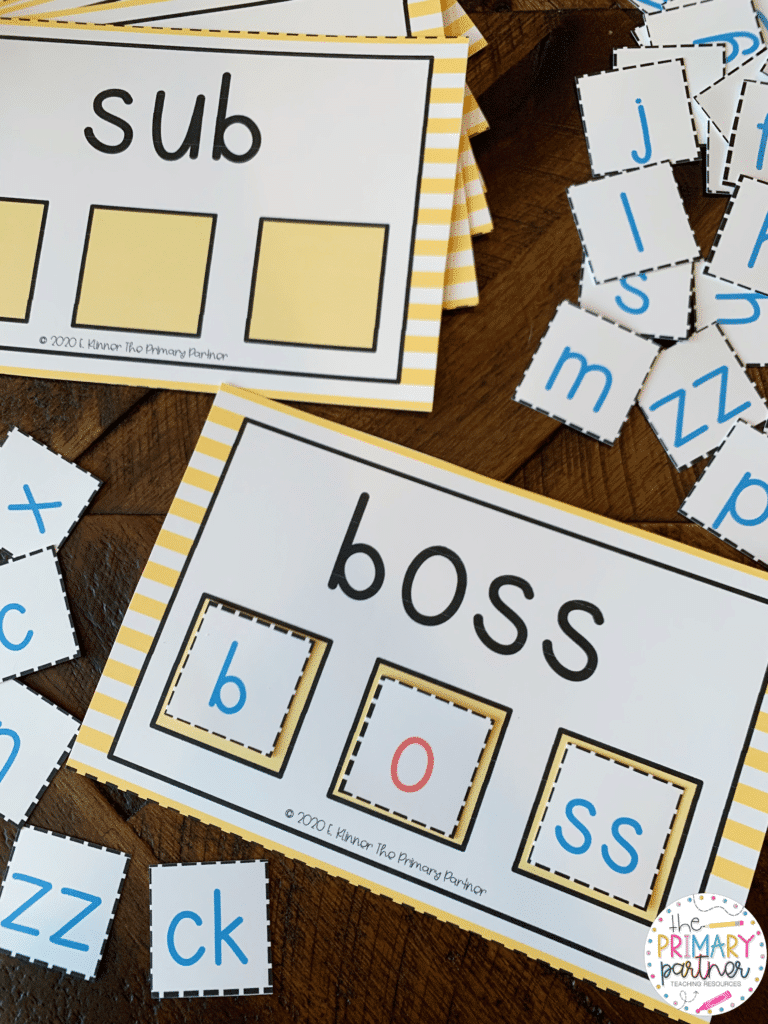
4. Phoneme Addition
Phoneme addition is just like it sounds! Adding a sound to a word. This sound can be added to any part of the word, but it’s best to start at the beginning and end.
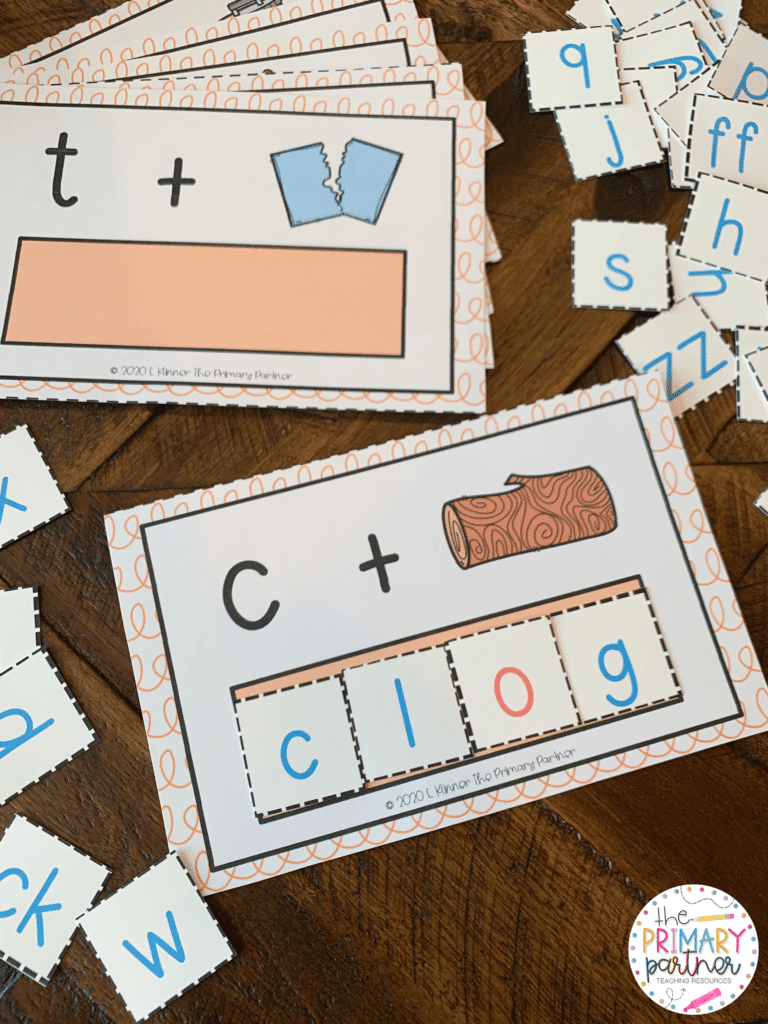
Give your child a simple consonant-vowel-consonant (CVC) word like ‘log,’ and ask them to add a sound to the beginning of that word to make a new word. It’s great to practice with both real and nonsense words, such as clog and zlog.

5. Phoneme Deletion
If we have phoneme addition, we also need phoneme deletion! This just means that children are able to remove a sound from a word.
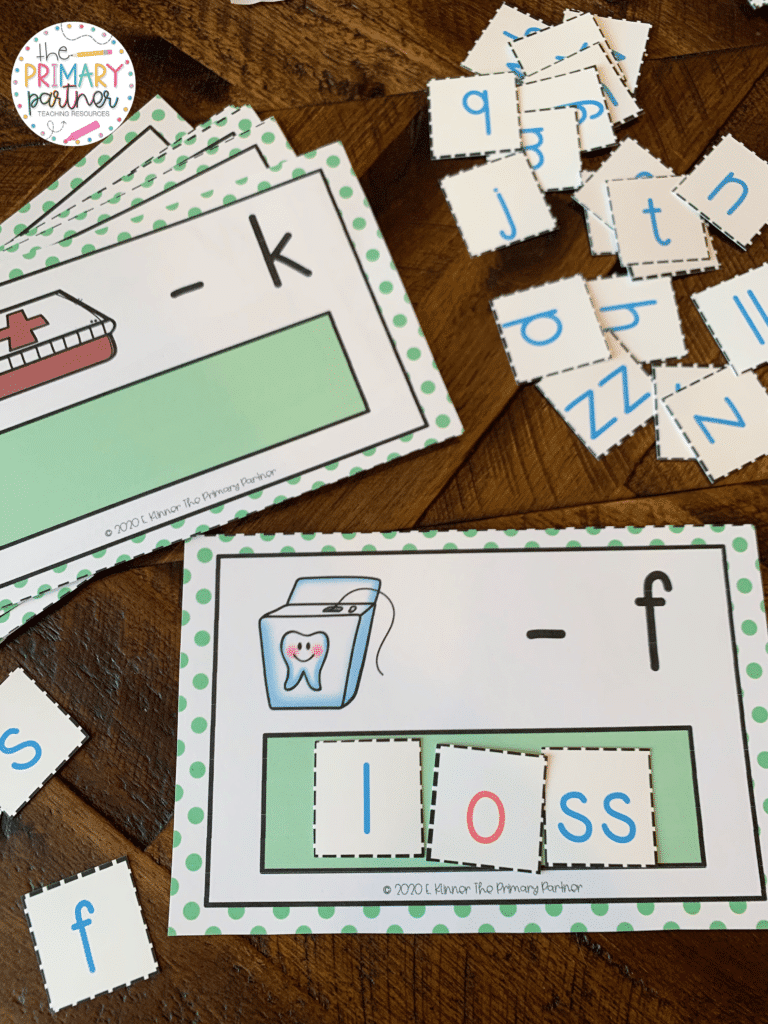
The phoneme can be removed from any part of the word, but like phoneme addition, you should start by removing beginning or ending sounds. Again, this should be done orally before introducing visual cues like these cards.
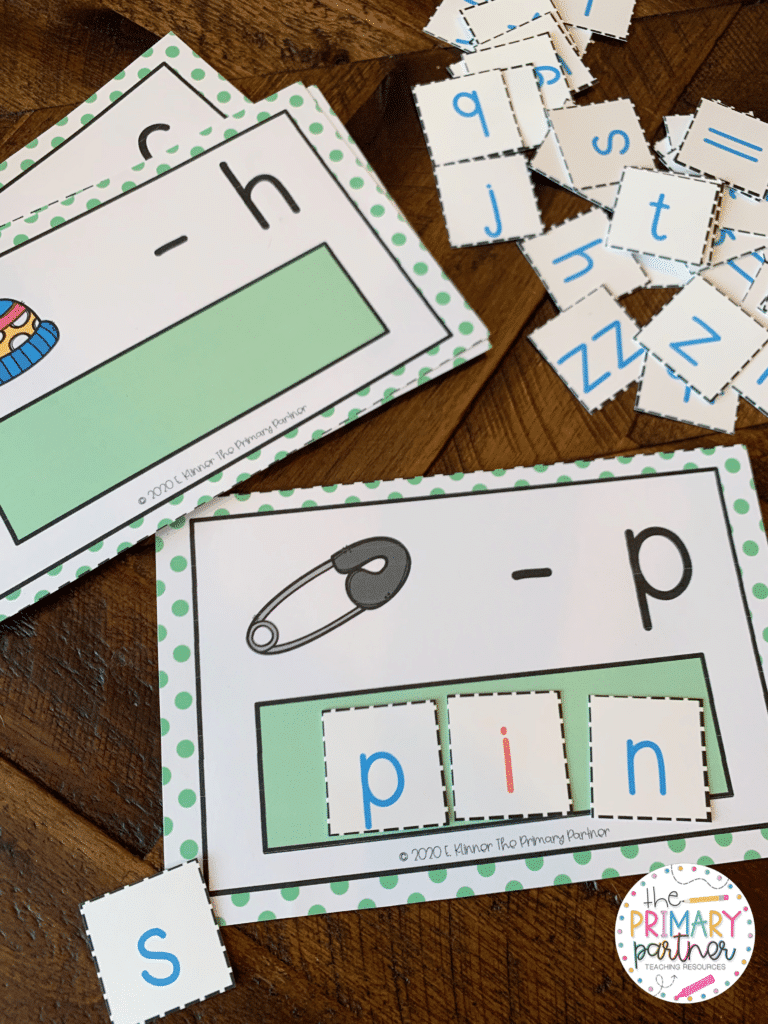
As your child’s reading progresses beyond CVC words to words with blends and digraphs, you can begin to ask them to delete phonemes within the word. For example, ask your child for the word when you remove /r/ from ‘frog.’ Make sure you are asking them to remove the sound, not the letter!
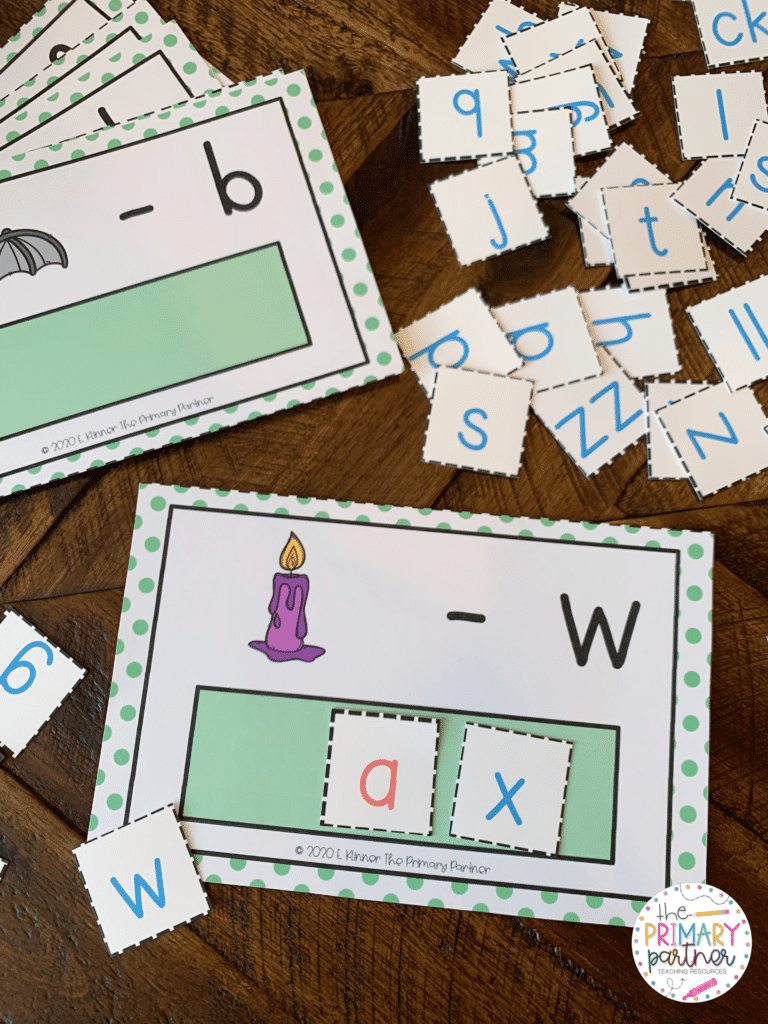
6. Phoneme Substitution
The last and most difficult layer is phoneme substitution. This involves substituting one sound for another to make a new word. Say a word to your child and ask them to remove one specific sound for a new sound. Tell them to say the new word.
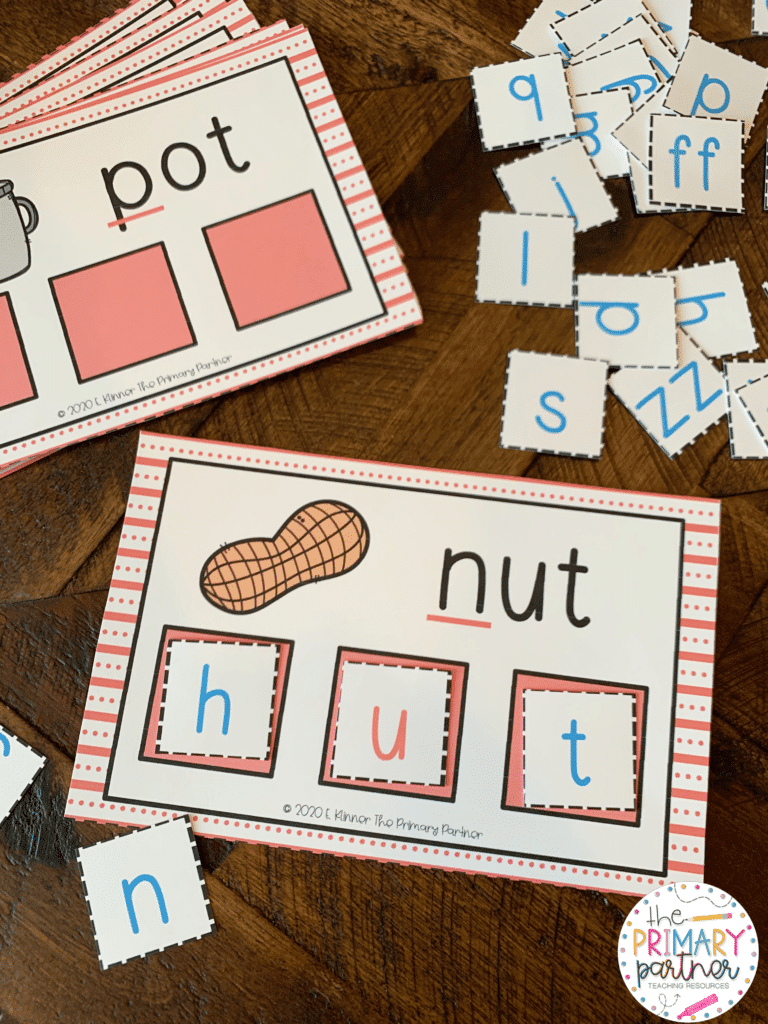
Once again, this should be done orally before introducing visuals like these cards. It can also be done with real and nonsense words.
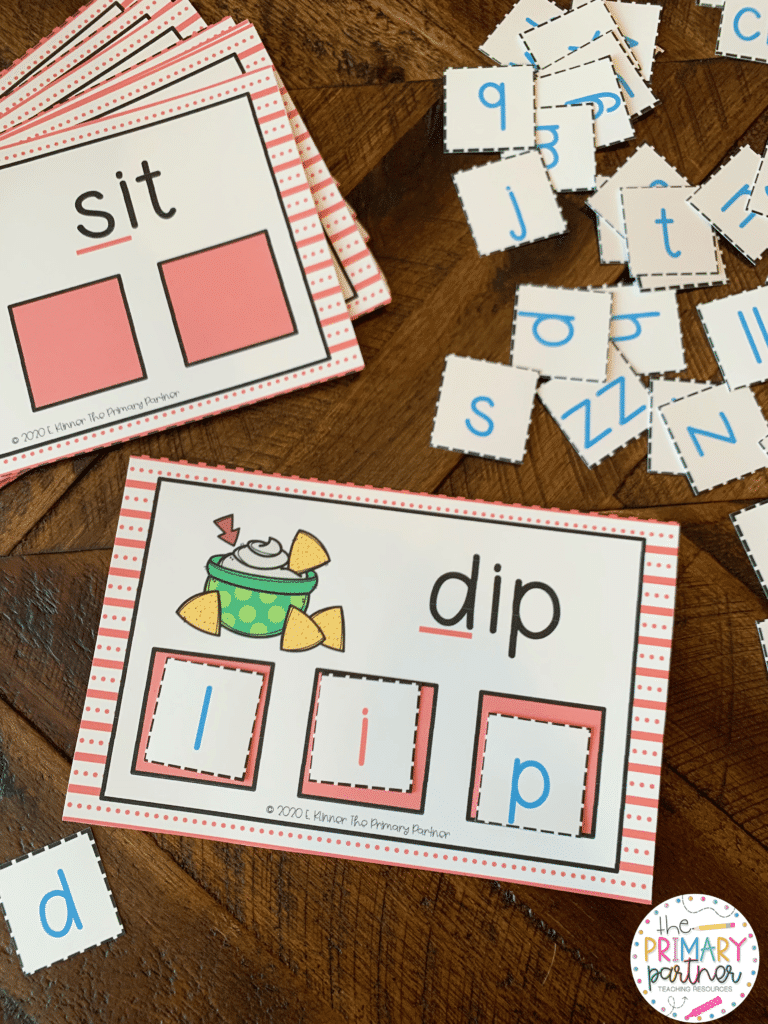
Now that you know how phonemic awareness relates to phonics instruction, below are some general guide lines for what is expected within the K-2 grade levels. If your child is behind these guidelines, it doesn’t necessarily mean that they need remediation. It’s important to talk to your child’s teacher about reading expectations.
What is phonics in kindergarten?
In kindergarten, children are generally grasping the relationship between letters and sounds. They are working on automatically recalling the sound associated with various letters. For example, they see the letter /d/ and can immediately recall its sound. Kindergarten students are also learning the five short vowel sounds. It’s incredibly important that they have a good understanding of these vowels.
As the year progresses, kindergarten students begin to blend these sounds together to make CVC words. They should work toward reading these words towards the end of the year. CVC words are words that have one consonant sound, one vowel sound, and another consonant sound, such as mat, peg, lip, dot, or bun.
What is phonics in first grade?
In first grade, children are continuing to solidify the short vowel sounds as they learn to read CVC words. A great deal of this year is focused on mastering this skill before moving on. Blends and digraphs are added to their repertoire. Students in first grade also typically learn magic (or silent) e words, such as cake, eve, bite, home, and mute. These words are usually referred to as ‘magic e’ words or CVCe words.
Towards the end of the year, first graders are introduced to vowel teams and r-controlled vowels.
What is phonics in second grade?
In second grade, students are learning to read more complex sentences, now that they have a solid foundation with a variety of phonics patterns. Second graders work on CVCe words, vowel teams, and r-controlled vowel words before learning to read multi-syllabic words.
What next?
Look for resources that you can use at home to support your child’s reading. Ask his/her/their teacher for recommendations. First, work on hearing phonemes and isolating them. Gradually begin to blend and segment words. Start with CVC words and work up. Practice these skills when talking with your child. Practice while you read to them.
You can get the resources pictured above as well as digital versions for free! These are samplings of what I offer in my membership for teachers and parents that are homeschooling this fall. If you’re interested in joining that membership, click here!

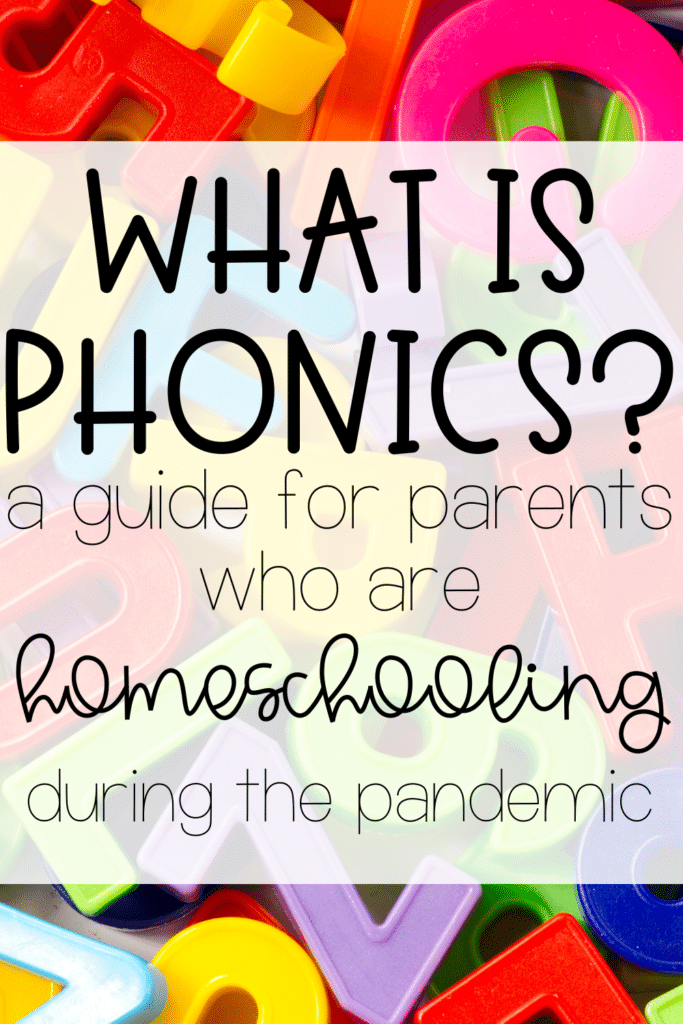


Hi, I’m Libby!
I’m so happy you’re here! I love all things first grade – the curriculum, the content, and the sweet kiddos. I’m passionate about helping K-2 teachers save time in the classroom with fresh ideas and fun, engaging resources.

